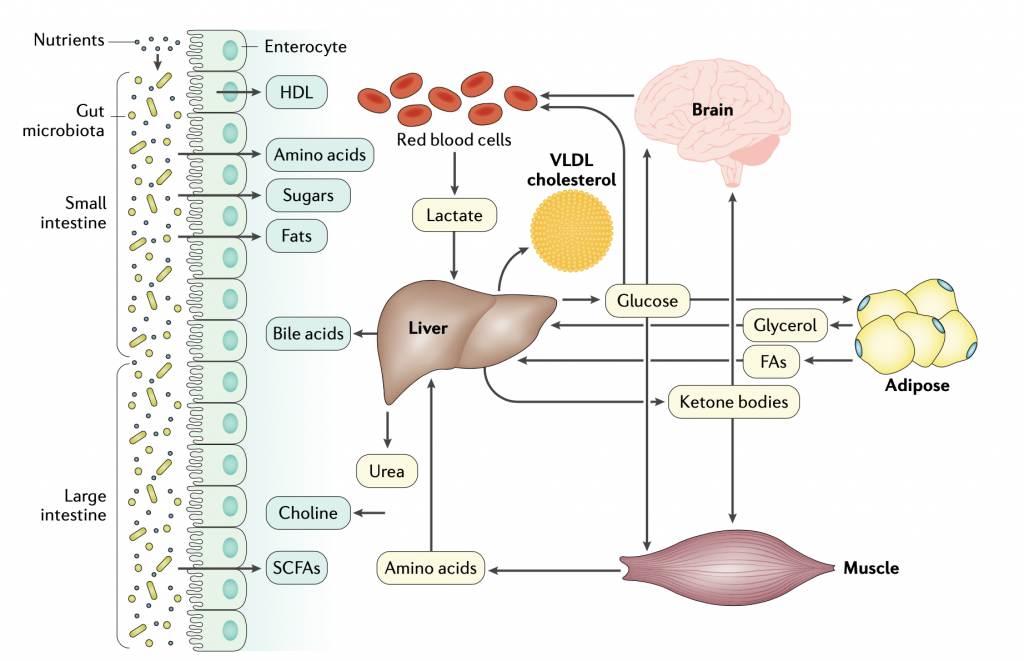Studying Host & Microbiome Interactions
 Understanding the interactions between different tissues and their interactions with the gut microbiota is necessary to gain detailed information about whole- body physiology. To study whole- body biological functions in health and disease states, simulation- ready cell specific or tissue- specific models, including those for the liver, adipose and muscle tissues, intestines, brain and red blood cells, as well as for the gut microbiota, can be integrated. Such knowledge can be used in elucidating the progression of metabolic diseases and for designing new therapies and clinical interventions. To study the crosstalk between liver and other human tissues, the secretion rate of VLDL cholesterol from liver can be measured, and these experimentally derived VLDL cholesterol kinetic data can be integrated with a liver genome- scale metabolic model (GSMM) and other constraints (glucose, ketone bodies, urea, bile acids and lactate) to simulate the dynamics of liver metabolism. The uptake and/or secretion rates of glycerol, fatty acids (FAs) and amino acids from adipose and muscle tissues can also be calculated on the basis of the body composition of each subject and integrated with the liver GSMM. The contribution of the gut microbiota to the host metabolism can also be predicted on the basis of diet, which accounts for the interactions among the microbiota. SCFAs, short- chain FAs.
Understanding the interactions between different tissues and their interactions with the gut microbiota is necessary to gain detailed information about whole- body physiology. To study whole- body biological functions in health and disease states, simulation- ready cell specific or tissue- specific models, including those for the liver, adipose and muscle tissues, intestines, brain and red blood cells, as well as for the gut microbiota, can be integrated. Such knowledge can be used in elucidating the progression of metabolic diseases and for designing new therapies and clinical interventions. To study the crosstalk between liver and other human tissues, the secretion rate of VLDL cholesterol from liver can be measured, and these experimentally derived VLDL cholesterol kinetic data can be integrated with a liver genome- scale metabolic model (GSMM) and other constraints (glucose, ketone bodies, urea, bile acids and lactate) to simulate the dynamics of liver metabolism. The uptake and/or secretion rates of glycerol, fatty acids (FAs) and amino acids from adipose and muscle tissues can also be calculated on the basis of the body composition of each subject and integrated with the liver GSMM. The contribution of the gut microbiota to the host metabolism can also be predicted on the basis of diet, which accounts for the interactions among the microbiota. SCFAs, short- chain FAs.